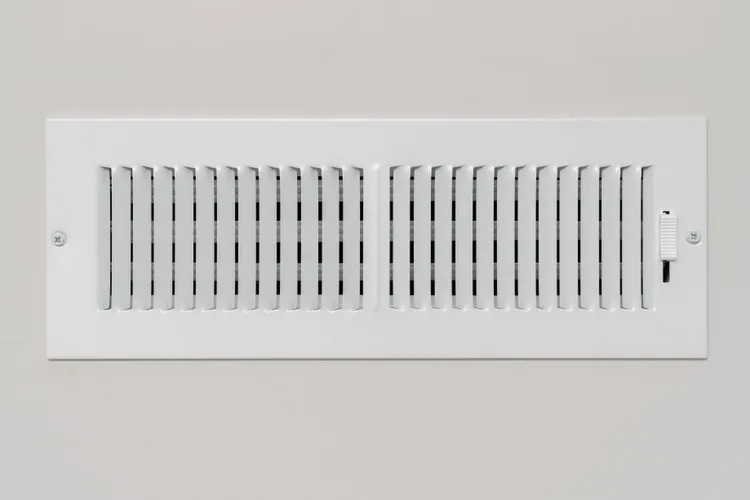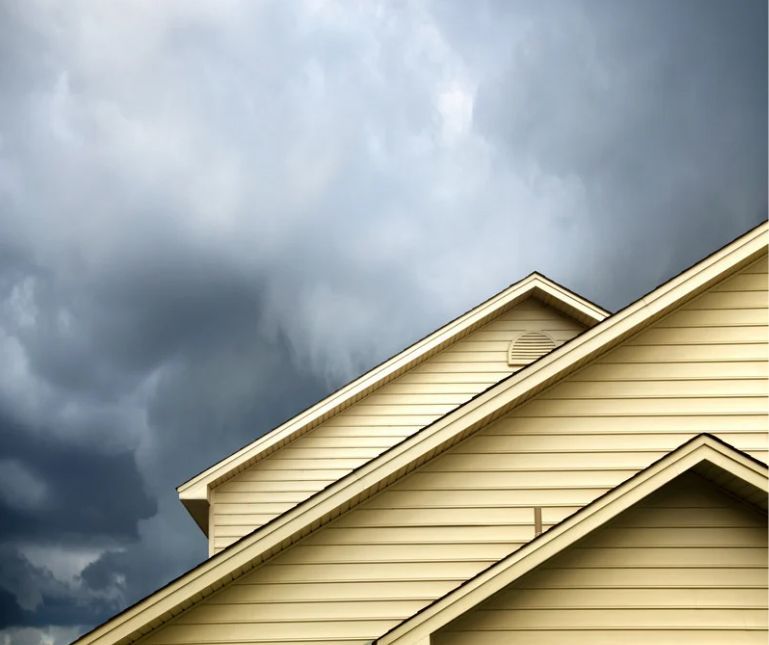How to Change a Tire
7007279964 • May 12, 2023
Knowing how to change a tire is a necessary skill for all drivers. You might be thinking, “I pay for a AAA membership so that I get roadside assistance and don’t have to worry,” or “I have a cell phone, I can just call someone to help.” Even if this is the case for most situations, there are still plenty of situations where these reasons don’t cover you. You, your friends, and your family’s safety on the road is very important to us.
WHY SHOULD YOU KNOW HOW TO FIX A FLAT TIRE?
1. Cell phones don’t always have service
In this day and age, we depend heavily on our cell phones, but cell service doesn’t always cover what it says it will. Landscape, weather, the locations of antennas and the cell network capacity all play a factor in you getting your service when you need it.
2. You might get a flat in a dangerous place
Even more serious would be finding yourself in a remote, secluded area with a flat tire. People can be dangerous, so we recommend getting help from a source you trust, if possible, like your roadside assistance. But sometimes roadside assistance cannot reach you within a reasonable amount of time. If you’re out on the road, it may take several hours to get help. In the meantime, you are putting yourself at risk by staying in this spot.
Other danger factors include weather conditions and where you had to park your vehicle (like a spot that slows down or blocks traffic). This isn’t to mention if you are in a rush: say you are on the way to an important meeting or need to catch a flight – knowing how to change the tire yourself can get you back on the road quickly.
3. You might save money
Aside from saving time, you might save yourself some money. If you don’t have roadside assistance or a friend who can help, your only other option may be to call a towing company to take it to a nearby repair shop. Needless to say, this is much more time and money than simply doing the job yourself.
Thankfully, changing a tire isn’t all that hard! Just adhere to the following guidelines to be prepared in case you have a flat.
ITEMS YOU'LL NEED TO FIX A FLAT TIRE
These items should have come with your vehicle: jack, lug wrench, fully inflated spare tire, and a vehicle owner’s manual.
If you have misplaced any of these items, or if your car did not come with these items, you should purchase new ones right away. And be sure you’re regularly inflating the spare tire to your vehicle manufacturer’s recommended PSI. You should check the spare’s air pressure every time you check your other tires. Remember to check pressure every month and before long trips or carrying extra load.
Here are some items that don’t come with your vehicle but that you should stow in your trunk or glove box in case you have to change a flat tire: flashlight with working batteries, rain poncho, small cut of 2"x6” wood to secure the jack, gloves, and wheel wedges.
HOW TO CHANGE A TIRE
The long and short of this process can be found in the list below. For a full video on step-by-step directions, visit Bridgestone Tires.
1. FIND A SAFE LOCATION
2. TURN ON YOUR HAZARD LIGHTS
3. APPLY THE PARKING BRAKE
4. APPLY WHEEL WEDGES
5. REMOVE THE HUBCAP OR WHEEL COVER
6. LOOSEN THE LUG NUTS
7. PLACE THE JACK UNDER THE VEHICLE
8. RAISE THE VEHICLE WITH THE JACK
9. UNSCREW THE LUG NUTS
10. REMOVE THE FLAT TIRE
11. MOUNT THE SPARE TIRE ON THE LUG BOLTS
12. TIGHTEN THE LUG NUTS BY HAND
13. LOWER THE VEHICLE AND TIGHTEN THE LUG NUTS AGAIN
14. LOWER THE VEHICLE COMPLETELY
15. REPLACE THE HUBCAP
16. STOW ALL EQUIPMENT
17. CHECK THE PRESSURE IN THE SPARE TIRE
18. TAKE YOUR FLAT TIRE TO A TECHNICIAN
Your road safety is very important to us. Contact our agency to discuss your auto insurance needs. We can provide coverage from many insurance carriers so you receive the insurance for your budget and needs!

Winter brings a unique set of challenges for drivers, from icy roads to snowdrifts. While preparing your vehicle for the cold weather is crucial for safety, understanding how your auto insurance protects you during these treacherous months is equally important. Taking proactive steps now can save you from a headache and a financial hit when the temperatures drop. 🚗 Preparing Your Vehicle for Winter Roads Before the first snowflake falls, dedicate some time to winterize your car to prevent breakdowns and make driving safer. Tires are your vehicle's most vital connection to the road. You should inspect the tread depth to ensure you have enough grip for slippery surfaces. You can use the classic "penny test"—if you can see the top of Lincoln's head when you insert a penny head-first into a tread groove, you should probably consider new tires. Also, remember that cold weather causes air pressure to drop, so check your tires regularly to improve handling and fuel efficiency. Beyond the tires, focus on your vehicle's essential fluids and systems. Battery health is critical; cold temperatures significantly reduce battery power, making it essential to have it tested, especially if it's older than three years. In terms of fluids, check your antifreeze mixture to prevent your engine from freezing, and top off your windshield washer fluid with a winter-grade solution that resists freezing. Finally, ensure your brakes are in top condition and that all of your exterior lights are functional so you can clearly see and be seen on dark, snowy days. 🧰 Don't Drive Without a Winter Emergency Kit Even the best-prepared car can be unpredictable in a snowstorm. Having a well-stocked emergency kit in your trunk is crucial if you get stranded or need quick assistance. This kit should contain several essential items designed to keep you warm, safe, and visible. Your must-have emergency list includes: • Traction and Tools: Jumper cables, a small shovel, and a bag of sand, cat litter, or rock salt to help your tires gain traction if you get stuck. • Warmth and Safety: Warm blankets, hats, and gloves to retain heat, a flashlight with extra batteries, and a basic first-aid kit. • Communication: A fully charged cell phone and a portable charger are vital for calling for help. • Sustenance: Non-perishable food and water, in case you are delayed for a significant amount of time. 🛡️ What Your Auto Insurance Covers in Winter Understanding your policy is key to peace of mind during the challenging winter months. Your auto insurance is designed to protect you from common winter accidents and damage, but only if you have the right coverage. • Collision Coverage is what pays for damage to your vehicle if you are involved in an accident with another car or an object. If you slide on black ice and hit a guardrail, a light pole, or end up in a ditch, your collision coverage helps pay for your car's repairs, minus your deductible. Since loss of control is so common in winter, this is one of the most critical coverages to maintain. • Comprehensive Coverage handles damage to your vehicle resulting from "non-collision" events. This is especially relevant in winter for events like hail or wind damage from a bad storm, or if a tree branch falls on your car due to heavy ice or snow. It also covers damage from theft, vandalism, and accidents with animals, which can still occur during the colder months. • Liability Coverage is mandatory in almost every state and is there to protect you financially if you are at fault for an accident. If you slide on an icy overpass and cause an accident that injures another person (Bodily Injury) or damages another vehicle or someone's property (Property Damage), your liability coverage will step in to cover those costs, up to your policy limits. Remember, this coverage never pays for damage to your own vehicle. As the snow falls and the temperatures drop, the combination of a well-prepared vehicle , a stocked emergency kit , and the right auto insurance coverage is your best defense against winter's driving hazards. Take a moment to check your tires, test your battery, pack those blankets, and, most importantly, review your policy's Collision and Comprehensive coverage with us. Don't let a slick road result in a financial headache. Being proactive now prepares you for the challenges of snow and ice with confidence and security , knowing you're protected on all fronts.

Few things are as delicious (or dangerous) as a deep-fried turkey. Each year, thousands of homeowners find out the hard way that hot oil and holiday excitement don’t always mix. Here’s how to do it safely and avoid turning dinner into a homeowners insurance claim. 1. The Big Danger: Fryer fires are responsible for more than $15 million in property damage every year. These fires start when people use fryers indoors, overfill them with oil, or drop in a frozen bird. Always set up your fryer outside on a flat, non-flammable surface — and keep a fire extinguisher nearby. 2. Thaw, Dry, and Lower Slowly: Moisture and hot oil are a bad combination. Make sure your turkey is completely thawed and dry before lowering it in — slowly and carefully. 3. Keep Kids and Pets Away: Hot oil can splatter or spill, so set a safety zone of at least three feet around your fryer. 4. Check Your Homeowners Coverage: If a cooking fire causes damage, your homeowners insurance may help with repairs. But prevention is priceless — no one wants to spend Thanksgiving filing a claim. Thanksgiving is about food, family, and gratitude — not flames and phone calls to your insurance agent. By taking a few simple precautions and keeping safety top of mind, you can enjoy a perfectly crispy turkey and a worry-free holiday. From our team to your table, here’s to a safe, happy, and delicious Thanksgiving.

Stay safe on the road — and make sure your insurance is ready too. As days get shorter and the fall season settles in, deer become much more active — especially around dawn and dusk. In fact, fall is peak season for deer-vehicle collisions, which can cause serious damage to your car and injuries to passengers. Here’s a simple deer season driving checklist to help you steer clear of accidents (and insurance claims): Be Extra Alert at Dawn & Dusk • Most deer activity happens early in the morning and late in the evening. • Slow down and scan roadsides during these hours. • If you see one deer, expect more — they often travel in groups. Use High Beams Wisely • On dark, rural roads, use your high beams when no oncoming traffic is present. • High beams help spot glowing eyes on the roadside sooner. • Switch back to low beams quickly if a deer is in the road — bright lights can freeze them in place. Consider Deer Whistles or Reflectors • Some drivers install deer whistles or roadside reflectors to deter animals. • While not foolproof, they may reduce risks when paired with cautious driving. Defensive Driving Tips • Never swerve sharply to avoid a deer — you risk hitting another vehicle or losing control. • Brake firmly, keep both hands on the wheel, and try to stay in your lane. • Always wear your seatbelt — most serious injuries happen when drivers lose control after swerving. Insurance Angle: Comprehensive Coverage Matters • If you hit a deer, it’s comprehensive coverage (not liability or collision) that pays for the damage. Without it, repair costs come out of pocket. Fall is the perfect time to check your policy to be sure you’re covered. Deer season doesn’t have to mean danger on the roads. By staying alert, using high beams wisely, and keeping your insurance up to date, you can protect both your passengers and your vehicle. As the leaves turn and daylight fades a little earlier, deer begin their busy season—and so should your fall driving precautions. A few simple actions—slowing down at dawn and dusk, using high beams responsibly, and resisting the urge to swerve—can make all the difference between a close call and a costly collision. And don’t forget: if you’re involved in a deer encounter, it’s your comprehensive coverage that steps up to help. Stay sharp, stay safe, and steer through deer season with confidence—check your policy and your mirror before your next drive.

This seemingly smart summer habit could be harming your HVAC system. With another record-setting summer underway and AC units working around the clock, many of us are looking for ways to cut down on our electricity bills. While closing vents in individual rooms or spaces might seem like a reasonable way to save money this summer, it’s actually not quite that simple. Despite what you might have heard, HVAC professionals say that closing vents in unused rooms is not an effective cost-saving measure. In fact, it might be doing more harm than good to your HVAC system. Should You Close AC Vents In Unused Rooms In Summer? “No, you should never close vents in individual rooms,” says Brad Martin, Field Service Manager for Boer Brothers Heating & Cooling in Chapel Hill, North Carolina. HVAC systems are designed to maintain a specific and balanced airflow known as CFM, or cubic feet per minute, throughout a home. Closing vents can increase pressure in the ductwork, potentially causing leaks or damage to the system. As a result, the system will not work properly or efficiently. What Role Do Vents Play In Heating And Cooling A Home? Vents act as exit and entry points for warm and/or cool air to lower or raise the temperature in your house. As the return removes the cool or hot air, Martin says, the supply vents replace this air with the opposite of what it is removing. In most homes, the furnace (forced air) and air conditioner (central air) utilize the same vents. Proper air flow is essential to the function of both systems. What Are The Risks Of Closing Vents In Unused Rooms? It might help to think of your HVAC system like your body’s cardiovascular system, and a closed vent like a blocked artery. “Closing vents in the individual rooms can cause the static pressure of the system to rise, causing issues like your blower motor failing, causing the compressor to fail,” Martin explains. “When individual vents are closed, the air still travels down that duct. Once it travels down the duct it has nowhere to go and then puts positive pressure back on the system.” Are There Any Energy Savings From Closing Vents In Unused Rooms During Summer? Closing vents in individual rooms will not help your cooling costs but actually hurt your system. “Closing vents puts a strain on the system, which in turn causes the system to work harder,” Martin says. “HVAC systems are designed for a certain CFM, so when the system’s vents are closed, the air that is still traveling through the ducts puts pressure on the system. This causes both the motor and compressor to get hot. When mechanical parts get hot, they pull higher amperage causing electricity bills to be higher and not perform at top energy efficiency.” The Correct Way To Adjust Air Flow To Different Rooms Instead of closing individual vents during the summer, Marin recommends installing (or adjusting) butterfly dampers at the main duct line. These dampers act as a block at the main duct trunk line, causing your system to function like there isn’t a vent in that particular room at all. Unless you’re experienced working with HVAC systems, it’s best to enlist a local HVAC technician to handle this for you. Source

Selecting the appropriate amount of business insurance coverage is crucial for safeguarding your company against unforeseen events. Insufficient coverage can leave your business vulnerable to financial losses, while excessive coverage may lead to unnecessary expenses. Striking the right balance ensures optimal protection without overspending. Why Insurance Coverage Matters Insurance protects your business from unexpected events—such as property damage, employee injuries, legal claims, and more. It’s more than a legal requirement; it’s a vital part of business strategy. With the appropriate coverage, you gain: • Continuity: Keep operating after a disaster. • Financial security: Avoid paying out-of-pocket for legal fees or repairs. • Confidence: Focus on growth without worrying about worst-case scenarios. Step 1: Understand Your Business Risks Every business faces unique exposures. To start: • Consider industry-specific risks, e.g., contractors have job-site hazards; retailers face theft or slip-and-fall claims. • Review past incidents or claims in your industry or business. • Factor in regional risks like severe weather or local regulations. A strong insurance plan starts with identifying what could go wrong. Step 2: Consult an Insurance Professional You don’t have to go it alone. A knowledgeable agent or broker will: • Analyze your operations: services, employees, assets, and day-to-day risks. • Explain policy options: general liability, commercial property, professional liability, workers’ comp, commercial auto, cyber coverage, etc. • Conduct a risk assessment to spot gaps and opportunities. Step 3: Catalog Your Assets and Exposure The more you possess, the more coverage you likely need: • Physical assets: buildings, tools, inventory, machinery. • Digital assets: customer or employee data—consider cyber insurance. • Intellectual property: patents, trademarks, or trade secrets. Ensure your coverage reflects full replacement value of tangible and intangible assets. Step 4: Align Insurance with Revenue and Growth Revenue often dictates risk appetite: • Current revenue: A $2M business may need higher liability limits than a smaller one. • Growth plans: Expansion, new service areas, or additional employee drivers affect coverage needs. • Contract stipulations: Some clients require specific policy limits before working together. Step 5: Analyze Your Liability Exposure Liability claims pose major risks: • General liability covers bodily injury and property damage from operations. • Professional liability (E&O) protects against mistakes in advice or services. • Product liability is essential if you manufacture or sell products. • Employment practices liability addresses HR-related lawsuits like wrongful termination. Your agent can help assess what types of liability are most relevant. Step 6: Know Legal and Contractual Requirements Every location and industry has standards: • Workers’ compensation: Usually mandated if you have employees. • Commercial auto insurance: Required if your business uses vehicles. • Surety bonds: Often needed to legally bid on contracts in industries like construction. Step 7: Set Appropriate Coverage Limits After assessing risks and assets, establish coverage limits: • Property insurance should cover full replacement value—not just depreciated worth. • General liability: Most small to mid-sized businesses choose $1M per-occurrence and $2M aggregate; higher-risk industries may need more. • Umbrella/excess liability: Adds extra protection above standard limits. • Deductibles: Higher deductibles lower premiums but require readiness to cover costs up-front. Step 8: Review and Adjust Regularly Insurance isn’t a set-and-forget decision: • Annual reviews: Reassess when staffing, services, revenue, or assets change. • After incidents: Post-claim or near-miss, update your policy to prevent future issues. • Triggers for change: New locations, equipment, or revenue targets should prompt a review. Determining the right amount of business insurance means balancing your exposure, assets, revenue, and regulatory requirements. Work with a trusted agent, evaluate your liability exposure, and choose coverage limits that align with your industry and size. By following these steps, identify risks, consult professionals, value your assets, match coverage to revenue, evaluate liability, meet requirements, set limits, and review regularly—you build a protection plan that grows with your business and safeguards what you’ve worked hard to build.

Building a business involves making countless vital decisions, including hiring the right team, buying the right software, and finding a suitable space. Understanding the basics of insurance coverage may be glossed over during day-to-day operations. Insurance is one of the behind-the-scenes essentials that can make or break financial stability when the unexpected occurs. It is vital that you fully understand your policy limits and deductibles. Insurance Limits: Your Business’s Safety Net An insurance limit is the maximum amount your policy will pay out in the event of a claim. When you think of insurance as a safety net beneath a tightrope walker, the higher the limit, the more protection you have in a fall. If coverage limits are too low, you could face severe financial losses. For example, when a business is hit by a natural disaster or is named in a high-value lawsuit with damages over $1 million when the policy limit is $500,000, the business will be responsible for paying the remaining $500,000. Choose your limits carefully to reflect the actual value of your business, the risks involved, and the potential recovery costs. Deductibles: Lower Is Not Always Better A deductible is what is paid out of pocket toward a covered claim before insurance coverage kicks in. It is a common misconception that it is always better to have a lower deductible. Of course, it means you pay less upfront, but lower deductibles often come with higher premiums. A higher deductible can save you more on monthly premiums, but you must be prepared to cover more in case of a disaster. This is a classic case of “you get what you pay for.” Consider your cash flow and risk tolerance carefully when choosing a deductible. General vs. Specific Limits Insurance limits are not all created equal. While general limits apply to the entire policy, specific limits can be tied to individual categories of coverage. For example, a commercial liability policy with a general limit of $1 million may have specific limits within the policy for product liability, employee injury, and other types of coverage. It is essential to know what each limit covers so you are not left high and dry if you need to file a claim. When Raising Your Limits Is a Smart Move Ultimately, understanding insurance limits and deductibles comes down to two questions: What is the worst-case scenario, and can your business survive it? As your business grows, so do your risks, and your insurance limits should grow with it. If you are expanding, launching new products, or taking on larger contracts, it is time to reassess the policy limits. Adjusting coverage to match the new reality could save you headaches down the road. Business insurance is not a one-size-fits-all solution. It should match your unique business needs, and limits and deductibles should be re-visited as the business evolves. The right coverage gives you peace of mind to focus on what matters most – running your business. Our agents are licensed professionals who can review your business policies and help ensure you have the right coverage, including limits and deductibles. Source: www.insuranceneighbor.com/5-things-business-owners-should-know-about-insurance-limits-deductibles/

Having a home with a fenced yard can help with security and privacy concerns and increase your home’s value. That’s why it’s essential to keep up with fence maintenance. Proper fence maintenance Whether it’s a vinyl, wood, or metal, if not properly maintained, a fence can deteriorate, making it more prone to damage. While wear and tear to your fence from lack of maintenance won’t be covered by your homeowners policy, there are things you can do to properly maintain it. Inspect fence regularly Check your fence often for damage like rot, loose boards, cracks, or rust. Clean fence A fence should regularly be cleaned with a hose or power washer to remove dirt, grime, and mold. If it’s metal and showing signs of rust, use sandpaper or rust remover. Repair damage After you have inspected and cleaned your fence, look for any spots that need to be repaired. Broken, warped, or rotted boards should be replaced, and any loose screws or nails should be tightened. For metal or vinyl fences, cracks or dents should be repaired as they may indicate deterioration or instability. Apply protective coating To protect your fence from water damage, rot, UV rays, and insects, apply a sealant, paint, or wood stain to touch up minor chips and cracks. Maintain vegetation Trees surrounding your fence should be trimmed to prevent limbs from falling on top. Plants, vines, flowers, and weeds should also be cut and maintained to decrease the chance of overgrowth, which can damage your fence. Keep sprinklers pointed away Because water can damage wood and rust metal, sprinklers should be pointed away from your fence to maintain longevity. Homeowners insurance and fence damage A standard homeowner’s policy with MAPFRE Insurance will usually cover losses should certain events like a major fire, windstorm, or heavy snow damage your home’s interior or exterior. The Other Structures portion of your policy may pay for damage to structures on your property that aren’t attached to your house, like a fence. Some examples of damage may include: • Fire or lightning • Vandalism • Snow or ice damage • Damage caused by a vehicle The type of fence damage your policy would not cover would be general wear and tear, damage from a lack of maintenance, or damage from an earthquake or flood. If your fence was damaged by a neighbor’s tree, you might be covered, but it could depend on the property line. In some cases, both you and the neighbor could be equally responsible for the fence’s replacement or repair. Keeping your fence in good condition not only enhances the appearance and value of your property—it also helps protect it. By taking time to perform regular inspections and simple maintenance tasks, you can extend the life of your fence and reduce the risk of costly repairs. Remember, while homeowners insurance may cover sudden and accidental damage caused by certain events, it won’t cover neglect or lack of upkeep. If you’re unsure whether your current policy offers the right protection for your fence or other structures on your property, reach out to us. We can help you understand what’s covered, what isn’t, and whether additional coverage might be right for you. A little maintenance now, paired with the right insurance coverage, can save you time, money, and stress down the road. Source: www.mapfreinsurance.com/blog/proper-fence-maintenance/

Agostinelli Teller & Ryan Insurance, AT&R Insurance, Ashland MA Insurance, Ashland Insurance, Massachusetts Insurance, Auto Insurance Ashland, Home Insurance Ashland, Business Insurance Ashland, Insurance Agency Ashland, Insurance Coverage Massachusetts, Marriage, Massachusetts, Newlyweds, Marriage Certificate, Name Change, Identification, Driver’s License, RMV, Spousal Coverage, Employer Benefits, Massachusetts Health Connector, Filing Taxes, Married Filing Joint, Married Filing Separate, Auto Insurance, Home Insurance, Insurance, Policy Update, Beneficiaries, Coverage Review, Financial Planning, Liability Coverage, Insurance Discounts

When it comes to home insurance, one of the most pressing questions homeowners have is, “Are natural disasters covered?” After all, the unexpected can happen at any time, and the impact of natural disasters can be devastating. Understanding what your home insurance policy covers—and what it doesn’t—is essential for protecting your home and belongings. In this blog, we’ll explore various natural disasters, how they are treated by standard home insurance policies, and whether you need additional coverage to ensure you’re adequately protected. The Basics of Home Insurance Coverage What Does Home Insurance Typically Cover? Home insurance is designed to protect your home and personal belongings from a range of risks. Most standard policies cover a variety of perils, including: Fire and Smoke Damage: Damage caused by fire or smoke is typically covered, allowing you to repair or rebuild your home. Theft and Vandalism: If someone breaks into your home and steals your possessions, your policy can help reimburse you for those losses. Wind and Hail Damage: Damage from windstorms or hail is usually covered under a standard policy, including damage to your roof, siding, and windows. Liability Protection: Home insurance also provides liability coverage in case someone is injured on your property and decides to sue you. However, when it comes to natural disasters, coverage can vary significantly based on the type of disaster and your specific policy. Let’s break down some of the most common natural disasters and how they are typically treated in home insurance policies. Floods: Not So Easy to Cover Understanding Flood Insurance Floods can be incredibly destructive, and unfortunately, they are not covered by standard home insurance policies. This is a crucial point for homeowners to understand. If you live in a flood-prone area or near a body of water, it’s essential to consider obtaining separate flood insurance. Here are some key points to keep in mind: National Flood Insurance Program (NFIP): The NFIP is a federal program that offers flood insurance to homeowners, renters, and businesses. If you live in a participating community, you can purchase flood insurance through the NFIP. Coverage Limits: Flood insurance policies generally have specific coverage limits for both the structure and personal property. It’s important to review these limits to ensure they meet your needs. Waiting Period: Most flood insurance policies have a waiting period of 30 days before coverage takes effect. Be sure to plan ahead and secure your policy well in advance of any potential flooding. Understand Your Risk: Even if you don’t live in a high-risk flood zone, floods can occur anywhere. Consider your risk level and discuss flood insurance options with your insurance agent. Earthquakes: A Different Kind of Risk Earthquake Insurance Explained Like floods, earthquake damage is typically not covered by standard home insurance policies. If you live in an area prone to seismic activity, you may want to consider purchasing earthquake insurance. Here’s what you should know: Separate Policies: Earthquake insurance is usually sold as a separate policy or endorsement to your standard home insurance. Check with your insurer to see what options are available. Coverage Limits and Deductibles: Earthquake insurance policies often come with higher deductibles than standard home insurance. It’s essential to review your policy terms and understand what is and isn’t covered. Types of Coverage: Earthquake insurance typically covers damage to your home’s structure, personal belongings, and additional living expenses if you need to temporarily relocate due to damage. Evaluate Your Risk: If you live in a seismic zone, consider the likelihood of an earthquake and the potential damage it could cause. Investing in earthquake insurance can provide security and financial protection. Hurricanes: Coverage Can Vary Navigating Hurricane Coverage Hurricanes can cause severe damage, so understanding how your home insurance policy handles hurricanes is vital. Here are some key points to consider: Wind Damage Coverage: Most standard home insurance policies cover wind damage caused by hurricanes. This includes damage to your roof, siding, and windows. However, it’s important to review your policy for specific limits and exclusions. Flooding from Hurricanes: While wind damage may be covered, flooding caused by a hurricane is not. If your home is at risk of flooding during a hurricane, you will need a separate flood insurance policy, as mentioned earlier. Hurricane Deductibles: Some states with a high risk of hurricanes may have specific hurricane deductibles. These deductibles can be a percentage of your home’s insured value rather than a flat dollar amount. Be sure to understand how your deductible works in the event of a hurricane. Prepare for the Worst: If you live in a hurricane-prone area, consider taking proactive steps to protect your home, such as reinforcing your roof, installing storm shutters, and securing loose outdoor items. Tornadoes: What You Need to Know Tornado Coverage Basics Tornadoes can strike quickly and cause significant damage to homes. Fortunately, most standard home insurance policies cover tornado damage, but there are key considerations: Wind Damage Coverage: Tornadoes are classified as windstorms, so damage from tornadoes is typically covered under most home insurance policies. Debris Removal: Many policies also cover the cost of debris removal after a tornado, which can help you manage cleanup efforts. Additional Living Expenses: If your home is severely damaged and you need to temporarily relocate, your policy may cover additional living expenses, such as hotel stays and food costs. Review Your Policy: As with any natural disaster, it’s important to review your policy to understand your coverage limits and any exclusions that may apply. Wildfires: Coverage Considerations Wildfire Insurance Insights In areas prone to wildfires, homeowners need to be aware of how their insurance policy handles fire damage. Here are some key points: Fire Damage Coverage: Most standard home insurance policies cover fire damage, including damage caused by wildfires. However, the extent of coverage may vary based on your specific policy and location. Risk Assessment: If you live in a high-risk wildfire area, your insurer may assess your property’s risk and adjust your premium accordingly. Homes in fire-prone areas may face higher premiums due to the increased risk. Mitigation Measures: Taking steps to reduce wildfire risk—such as creating defensible space around your home, using fire-resistant materials, and maintaining a well-kept landscape—can help lower your insurance costs and improve your safety. Review Your Policy: As with other natural disasters, be sure to review your policy to understand your coverage for fire damage and any specific exclusions or limitations. Additional Coverage Options Exploring Endorsements and Riders If you live in an area prone to natural disasters, you may want to consider additional coverage options to enhance your protection. Here are some options to explore: Endorsements: Many insurance companies offer endorsements that can be added to your policy to provide additional coverage for specific risks, such as earthquakes or floods. Riders: Riders are similar to endorsements and can provide additional coverage for personal belongings or specific types of damage. For example, you might consider a rider for valuable items like jewelry or art that may not be fully covered under a standard policy. Comprehensive Coverage: Some insurers offer comprehensive policies that provide broader coverage for natural disasters and other perils. Be sure to discuss your options with your insurance agent to find a policy that meets your needs. Stay Informed: Regularly review your coverage and stay informed about changes in your area’s risk of natural disasters. This will help you make informed decisions about your insurance needs. Preparing for Natural Disasters Act Before Disaster Strikes Preparation is key when it comes to natural disasters. Here are some proactive steps you can take to protect your home and belongings: 1. Create an Emergency Plan: Develop a family emergency plan that outlines how to respond in the event of a natural disaster. Ensure everyone in your household knows what to do and where to go. 2. Inventory Your Belongings: Keep a detailed inventory of your home’s contents, including photos and receipts. This will help expedite the claims process if you need to file a claim for damaged or lost items. 3. Secure Important Documents: Store important documents, such as insurance policies, identification, and financial records, in a safe place. Consider keeping digital copies in a secure cloud storage service. 4. Stay Informed: Stay informed about weather forecasts and potential natural disasters in your area. Sign up for local alerts and warnings to stay updated on any imminent threats. Understanding whether natural disasters are covered by your home insurance policy is crucial for protecting your property. While standard policies cover many perils, specific disasters like floods and earthquakes often require additional coverage. By familiarizing yourself with your policy, exploring endorsements, and taking proactive steps, you can ensure that you’re adequately protected against the unexpected. Home insurance is not just a policy; it’s a vital safety net that provides security during uncertain times. By proactively addressing your coverage needs and staying informed about natural disaster risks, you can feel confident in your ability to protect your home and loved ones. Remember, preparation is key, and having the right insurance in place can make all the difference when disaster strikes. Your home is your sanctuary, and with the right coverage, you can safeguard it against life’s unpredictable moments.

Agostinelli Teller & Ryan Insurance, AT&R Insurance, Ashland MA Insurance, Ashland Insurance, Massachusetts Insurance, Auto Insurance Ashland, Home Insurance Ashland, Business Insurance Ashland, Insurance Agency Ashland, Insurance Coverage Massachusetts, Auto insurance premiums, insurance cost factors, driving history impact, vehicle insurance rates, auto coverage options, deductible and premium, credit score insurance, location and insurance, car insurance discounts, safe driver savings, multi-policy discount, good student discount, low mileage insurance, insurance risk assessment, premium calculation process, car insurance tips, lowering insurance costs, choosing coverage wisely, high vs low deductible, vehicle safety ratings, accident risk factors, policy review benefits, insurance savings strategies, understanding auto premiums, tailored insurance coverage




